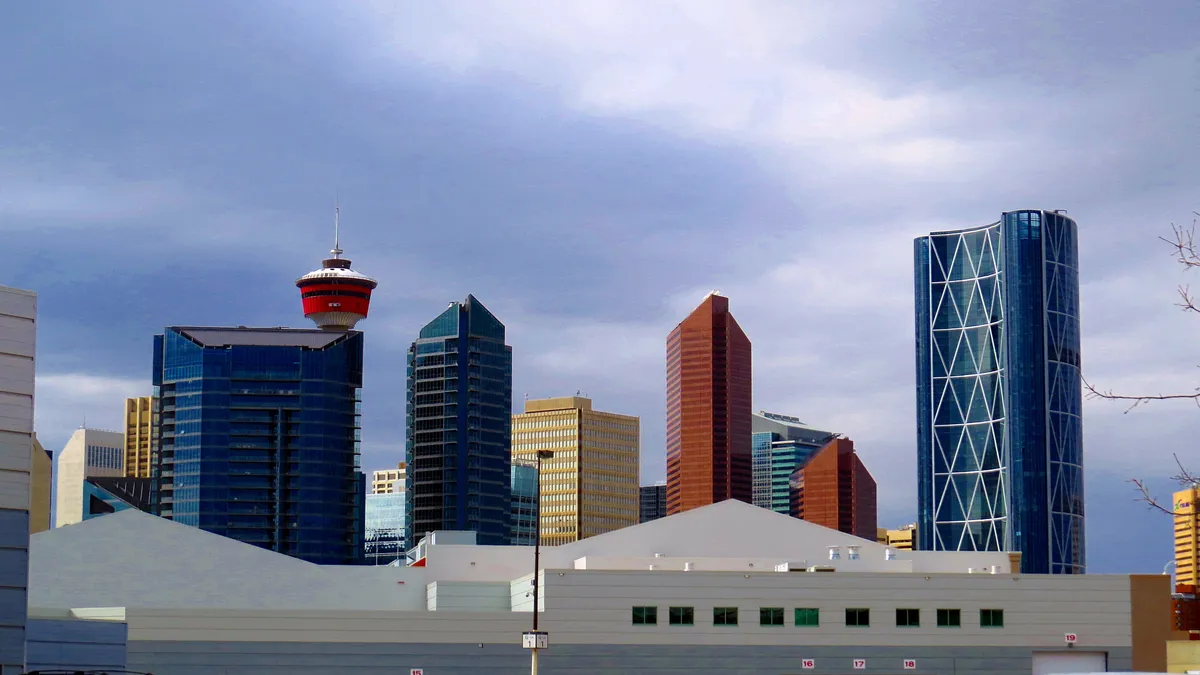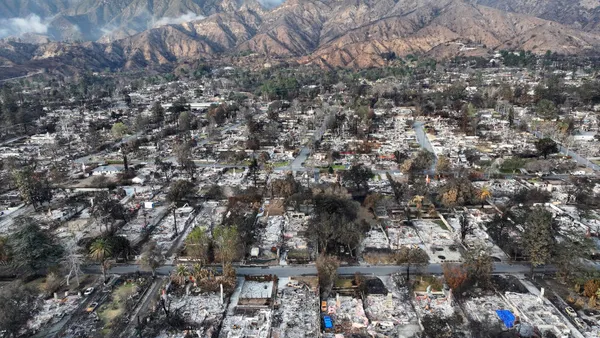Dive Brief:
- The City of Calgary in Alberta, Canada unveiled four new smart city initiatives Monday, designed to make use of sensors and the internet of things (IoT) to improve air quality, disabled services, climate and speed of play on its golf courses.
- Backed by technology company Semtech’s LoRaWAN devices that can send information over long ranges and have a long battery life, the initiatives will be in a pilot phase until next year. The city will use sensors to expand its noise pollution monitoring to keep track of gun noise; will implement a LoRa-based push button to be installed near city buildings for easier access for the disabled; will monitor the climate at the Devonian Gardens tropical horticultural refuge downtown; and will monitor golf carts at the Shaganappi Point course to give insights on pace of play and so predict revenue and adjust the course accordingly.
- “I think we should be able through the distribution of new technology get more data and help the city make better decisions, then feed it back to benefit our urban planning or even some of our transportation planning, and benefit citizens in their day-to-day lives,” Calgary IT leader Nan Xie told Smart Cities Dive.
Dive Insight:
Calgary’s investment in these smart city initiatives is in keeping with similar work across Canada in cities and towns of varying sizes. These investments run the gamut from high-profile efforts like that of Google-backed Sidewalk Labs in Toronto to the likes of Kingston, Ontario, which partnered with communications company Bell on energy management, installing kiosks, charging stations and other initiatives. The Canadian government has looked to encourage jurisdictions of all sizes to innovate with its Smart Cities Challenge, with former Minister of Infrastructure and Communities Amarjeet Sohi saying earlier this year that diversity is its greatest strength.
Xie said with 32 business units in city government, these initial pilot projects will be a good way to help explore how IoT solutions can apply elsewhere. He said it will be a "mutual learning process” for those business units and the city’s information technology (IT) department, which initially had a knowledge gap when it came to deploying and maintaining sensors, but has learned a lot about how the technology works. “That's our plan: Apply these technologies to the use case and try to bring our IoT into a sustainable model that we can live with and have for the next few years,” Xie said.
Most residents and visitors will likely feel the immediate effects from the noise monitoring, a problem that can be pervasive in cities where entertainment, sports and other cultural activities can butt heads with residents who desire a quiet life. And it bears similarities to a program in Louisville, KY, which looks to deploy drones for gunshot response, and so must also balance the civil liberties of its residents and ensure they are not under constant surveillance, unintentionally or not.
But given Calgary’s advances in this field, those involved are confident it will serve as an example for the rest of Canada, and even North America, especially as it owns its LoRaWAN network.
“I think Calgary is definitely on the innovative, thought-leader end of the scale, because if you think about smart city applications, really a city is a definition of an ecosystem so owning network infrastructure, being able to support the many, many incremental use cases that together deliver value, is really the model we're seeing emerge across different geographies,” Alistair Fulton, Semtech’s vice president of IoT Product Management and Marketing, told Smart Cities Dive.












